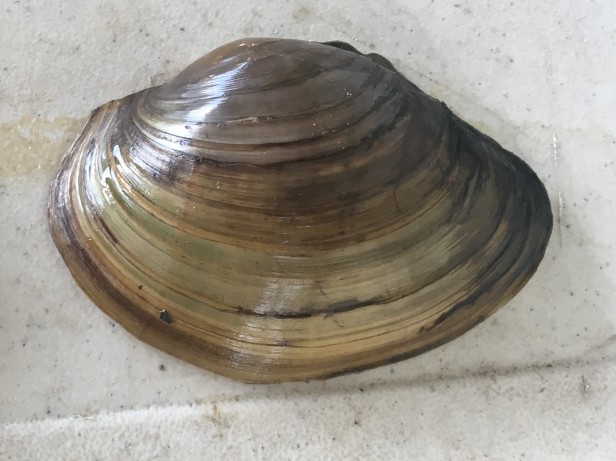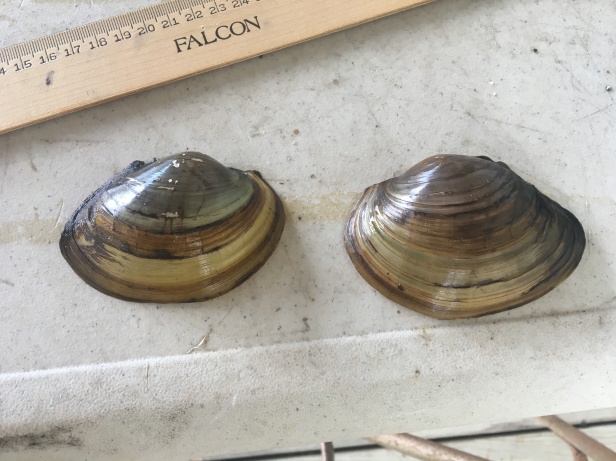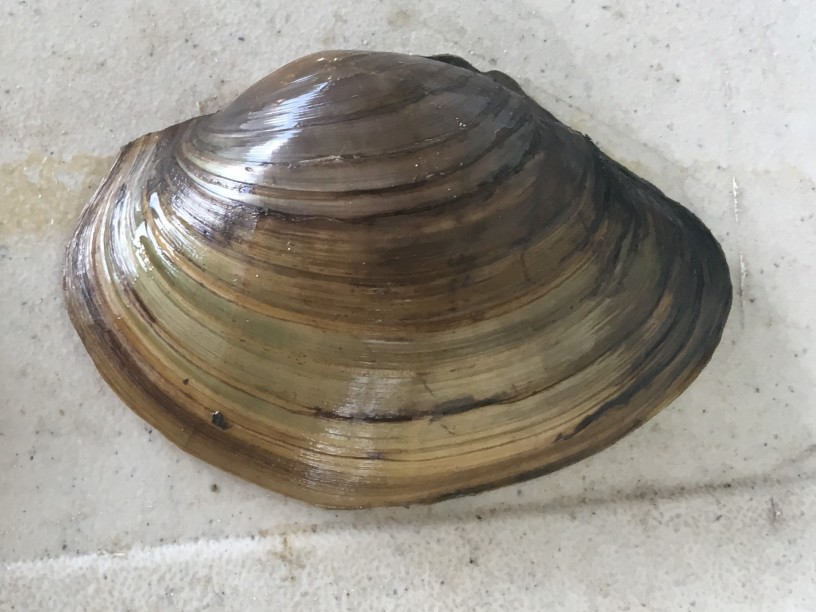

Utterbackiana hartfieldorum Williams, Bogan & Garner 2009 occurs in the Pearl River drainages in Louisiana (Jonathan Winslow, Jeffrey Thompson, Matthew Duplessis and Gary Vitrano (LDWF Inland Fisheries District 8), personal communications). Several specimens (see photos) were collected in the Bogue Chitto just west of Franklinton in Washington Parish on September 21, 2017. The species has been discussed in good detail in James D. Williams’ et al. (2014), Freshwater Mussels of Florida. In my book, The Historical Distributions of Freshwater Mussels in Louisiana (1993), Paul Hartfield’s specimen from the Pearl River in Marion County, Mississippi, was illustrated under the name Anodonta sp. c. f. suborbiculata (Say), where it was recorded as a possible resident of Louisiana waterways.
In the mid-1990s, I recall Bennie Fontenot (LDWF) showing me a shell of a specimen taken from the Pearl River drainages. I was not able to follow up on that specimen back then. Robby Maxwell (LDWF) made me aware of this collection. This report is far better as it includes multiple specimens that were recently collected and seen.
Discovering new mussels in Louisiana is really not surprising, but it is well-worth recording. The waterways of Louisiana include 4 major biogeographic zones: Ouachita, Mississippi River, Eastern Gulf and Western Gulf drainages. Each of these zones has a distinct fauna that is evident in the mussel communities. Very few surveys have been done, and these are very selective in the sites selected to search. I sampled with my many colleagues during the 1970s and 1980s, but my sampling was focused on discovering mussel beds in order to seek out parasitic mite and worm communities within the mussels. I had great success and managed to name some 30 mite species new to science, and I organized my collections and revisited published records in order to compile the book on freshwater mussels.
The mussels once formed massive beds that extended for miles of river and lake bottom. There they filtered the water and provided substrate for a complex community of living organisms–not unlike a coral reef or an oyster bed in the marshes and oceans. Many of these beds have either been dredged or smothered by sediment over the years. New surveys are direly needed. These new surveys can be companioned with DNA sequencing of samples of the specimens–these kinds of studies have opened numerous pathways for the study of systematics and community structure. Conservation decisions require accurate assessment of not only the particular species of mussels but also the community structure of mussel beds.
Malcolm Vidrine (mvidrine@lsue.edu)
